We plan to be at the Conway Farmer’s Market tomorrow from 8 am to 1 pm.
Market Line-Up:
Our very own Local Honey, along with some Aloe Vera Plants and Basil Plants too.
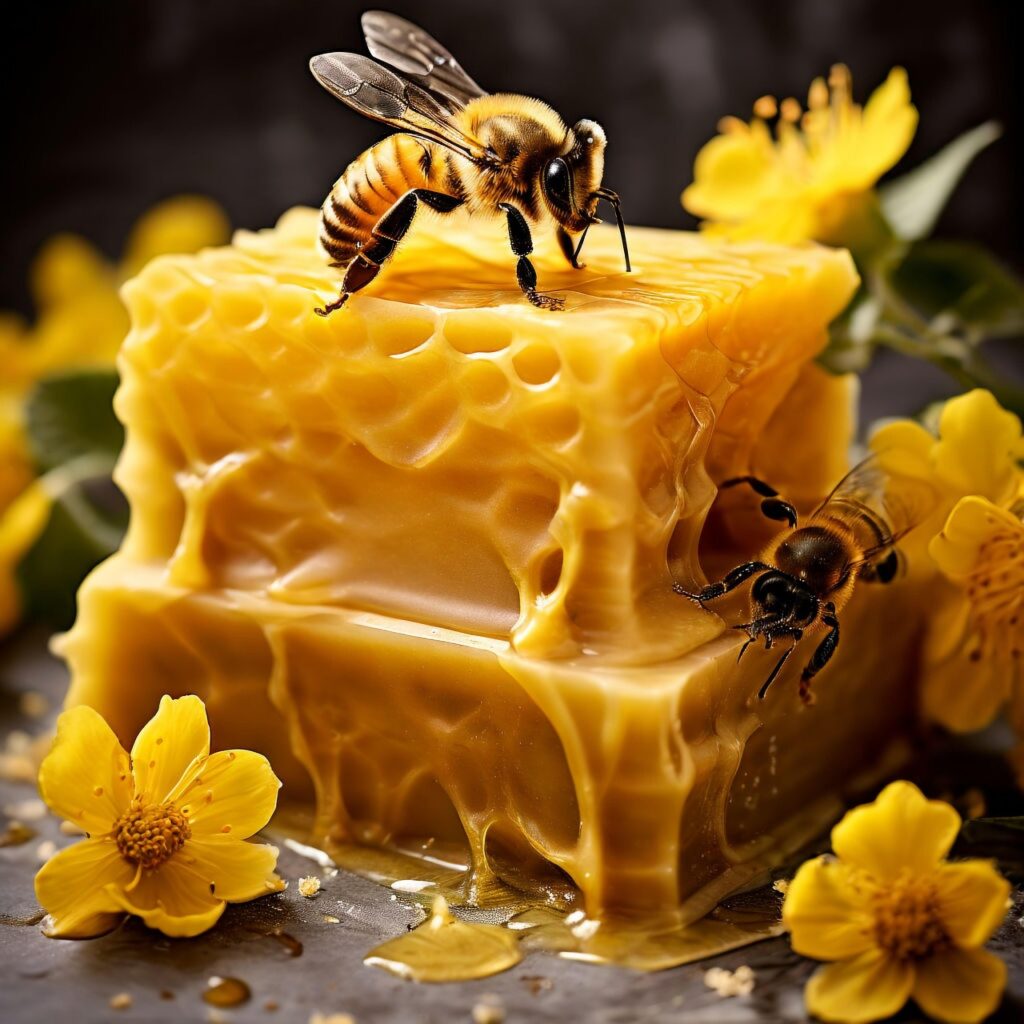
Type of beeswax
We can use beeswax in many ways. We find it in candles, soap, woodworking, and even cosmetics. It is a bonus to what keeping bees offers besides honey.
The working honeybees make beeswax for different reasons in the hive. Before they can produce honey, they need to build honeycombs from beeswax cells. In these combs, the queen lays eggs, and the worker bees make honey. More wax is used to seal everything up. They also use beeswax to brace and bridge their honeycombs together to make them structurally secure.
When we extract honey, we try our best to keep the comb safe. We carefully slice the wax from the tops of the honey, leaving the comb behind so the bees can reuse it and not have to spend all their effort making more comb instead of making honey.
I have learned that there are mainly three types of wax to be rendered from our honeybees.

- Capped Wax
- This is what we slice from the frame, basically the lids of the honeycomb.
- The cleanest wax.
- Inspection Wax (aka burr comb, brace comb, and bridge comb)
- Clean wax.
- Comes in small amounts.
- Old Frame Wax
- Old honeycomb where babies and honey have been made.
- The dirtiest, gross, yuckiest wax.
- Too much work for the small amount you get.
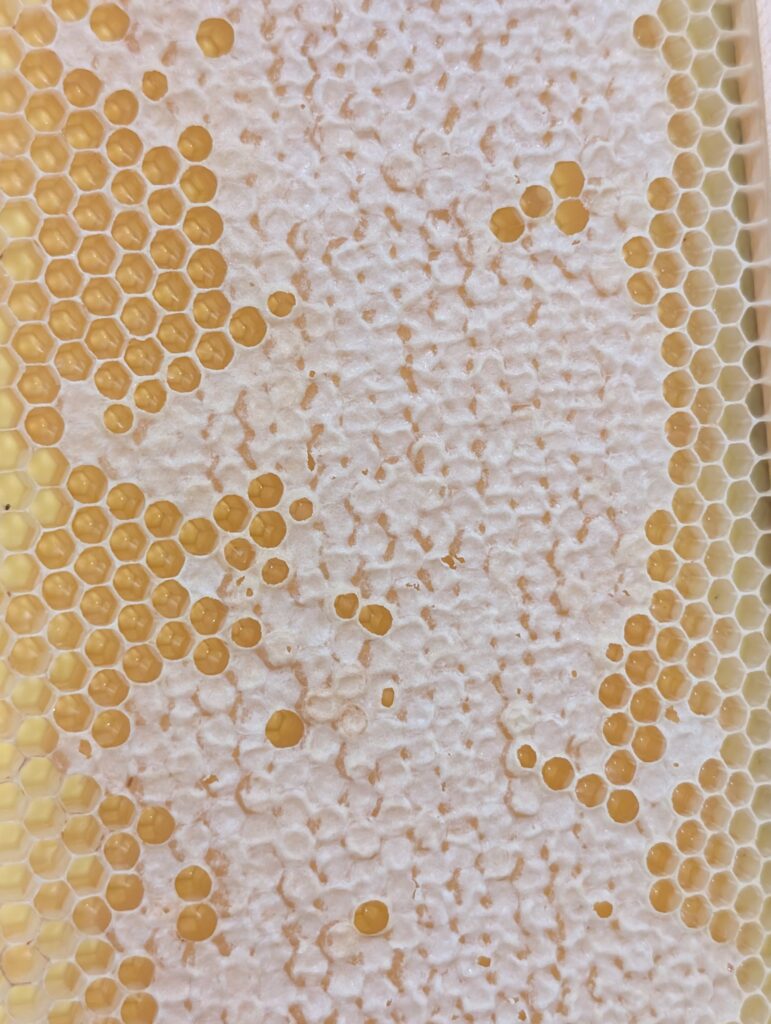
I wanted to render our beeswax to add to homemade soap. It contained all three types, and I could see the differences between them.
The capped wax is what you slice from the top of your honey frame before extracting it. You slice it from the frame to open the honeycombs before you spin the frame in the extractor. You then take that capped wax and place it back outside near your bees so they can clean all the honey left on it. Within a day or so, that sticky wax is clean, light, and dry.
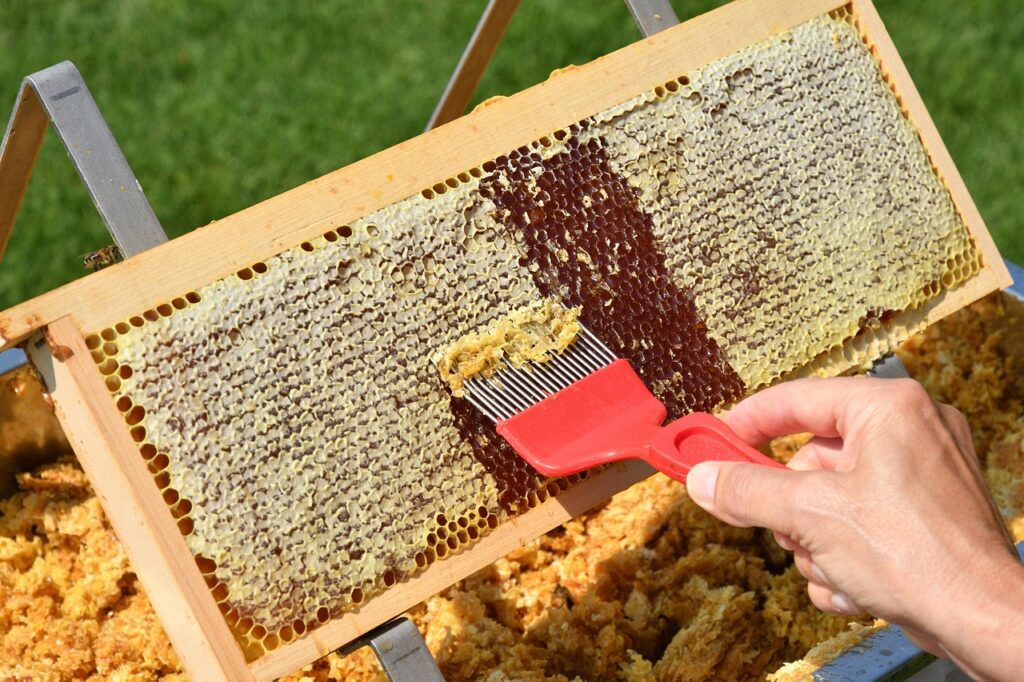

The Inspection wax is any honeycomb built in unintended locations within the hive. When you inspect your hive, you’ll see burr comb on the outside of the frames (Burr meaning rough edge) and sometimes between frames, sticking them together (hence the term Bridge Comb). This wax is clean, but there isn’t much to be gathered unless you leave your bees unattended for long periods.
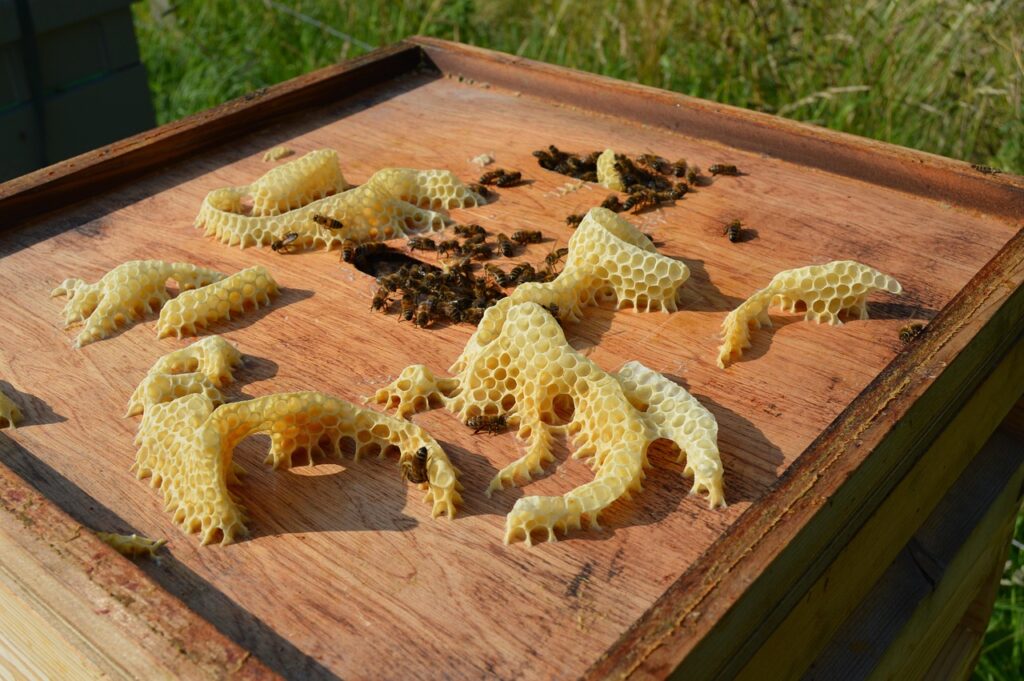
The old frame wax is gathered for different reasons. Perhaps you didn’t add a queen excluder, and she has laid some eggs where the worker bees also made honey in the same frame. You may decide to replace your frames every 3 to 5 years, so you scrape the old wax out to salvage it. Whatever the case may be, once I learned what this all entailed and I cleaned it, I made the decision that I no longer wanted to render the old frame wax, moving forward. By the time you clean it, it just didn’t give me enough wax to be worth the whole process. Perhaps I will feel different in the future.
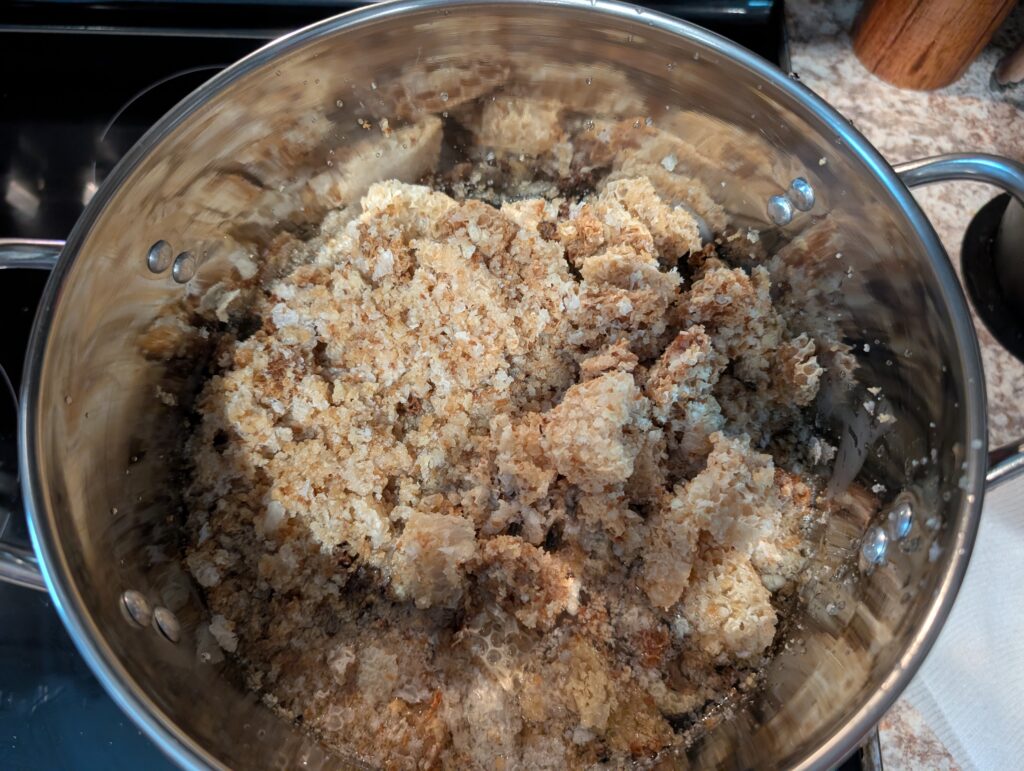
This is the beeswax I rendered for my first try. It was a long process, but I know my bees worked very hard to make this, and I am glad it is not going to waste.

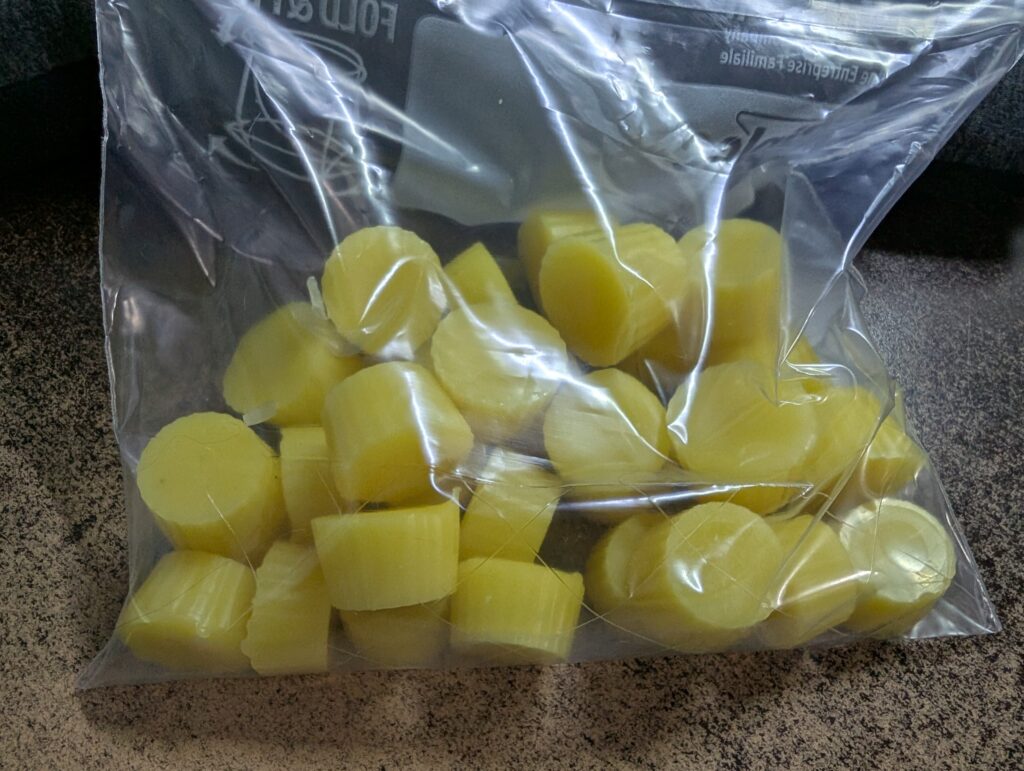
♥happy harvesting♥
#apiary #bee #bees #honey #honeybee #beekeeping #beeswax #beekeeper #honeybees #honeycomb #beehive #savethebees #hive #beeswax #beehives #homemadesoap #soap #diysoap #honeysoap
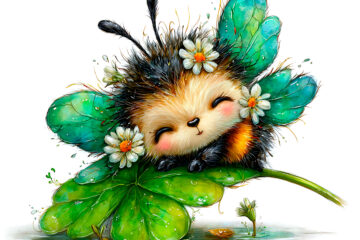
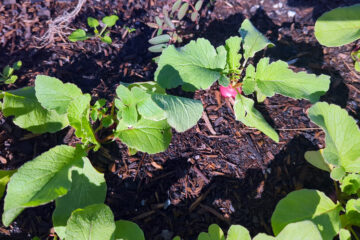
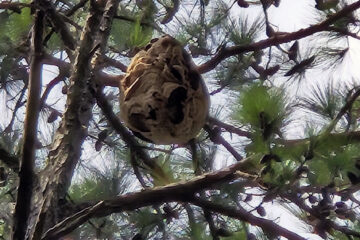
0 Comments